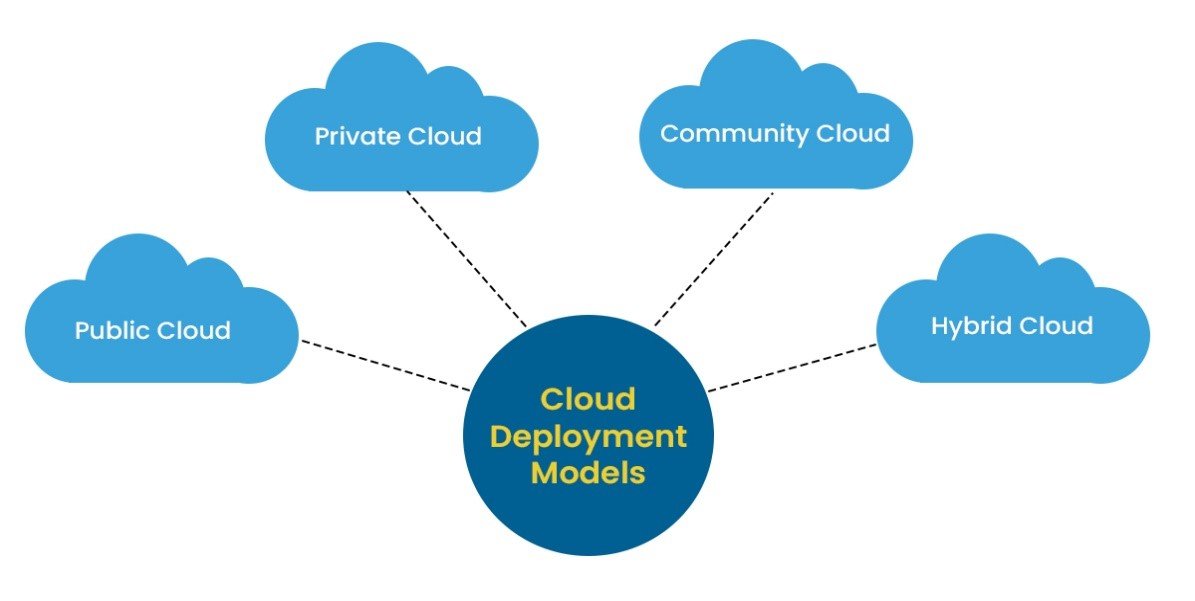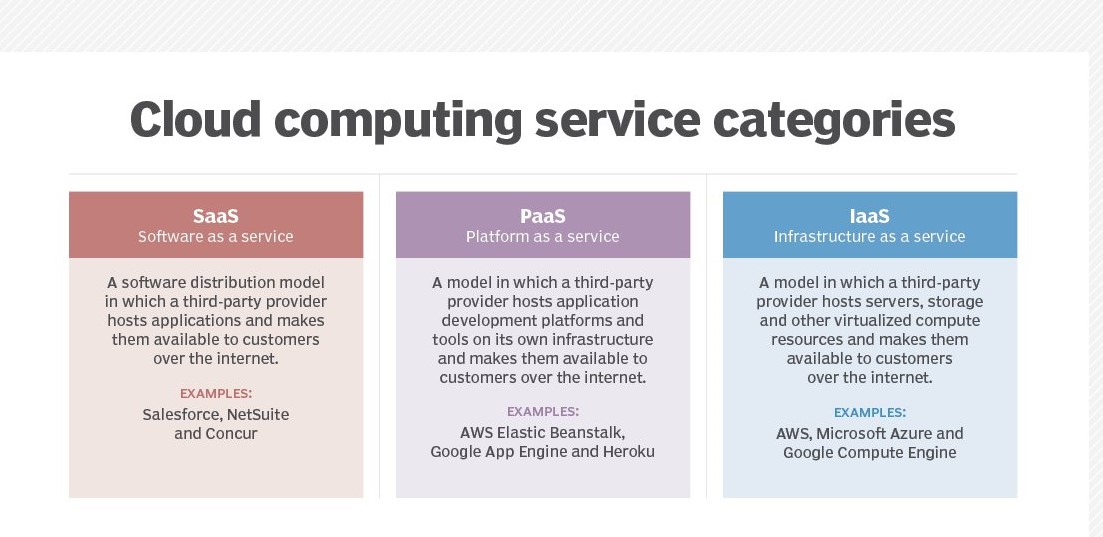What is Cloud Computing? Definition, Types, and Benefits
Cloud computing is a model of providing computer storage, network access, processing power, and software as a service to customers. This means that end-users don’t have to buy their own computer or storage space as part of the subscription. Instead, they pay for access to the cloud-based system instead. Cloud computing has many benefits for businesses and organizations of all sizes.
It makes it easier for people and departments outside of IT to use applications and services on the organization’s network. As well as that, it can make it easier for IT departments to manage multiple user accounts with different types of applications.
In this blog post, we will discuss what is cloud computing? What are the different types of cloud computing? And which advantages does it bring along with it? Keep reading to know more about it!
What is cloud computing?
Cloud computing is the delivery of computing services over a network that is accessible to customers, partners, and other businesses. They may be hosted on the same physical equipment or on remote equipment that’s accessible to the cloud provider.
Cloud computing services are delivered by a virtual network of computers, mobile devices, network routers, servers, and storage appliances. The network makes it possible for cloud customers to use software like Google Apps, Salesforce, Zendesk, etc. It also enables customers to store files, send emails, access remote servers, and run applications.
Types of Cloud Computing

There are three types of cloud: private cloud, public cloud, and hybrid cloud. The different types of cloud computing can further be categorized by the type of services offered and the type of network used to provide the service.
These include Software as a service (SaaS), Platform as a Service (PaaS), and Infrastructure as a Service (IaaS).
Let’s have a look at the main types before we go into the services.
Private cloud
A private cloud is an on-premises cloud infrastructure that can be owned, managed and operated by a single organization. Private clouds provide a way to move certain applications, such as those with sensitive data, off of the public Internet.
Public Cloud
A public cloud is a service that lets you store your data in someone else’s hardware and software. The resources available to you can be increased or decreased depending on your needs. Cloud providers usually charge by the hour or for each gigabyte of data stored in their servers.
Public clouds are very secure because they are accessible through the Internet, which has many security protocols in place to protect users from outside threats. The downside is that any information stored online could potentially be accessed by anyone who has access to the Internet, including hackers and government agencies.
Hybrid Cloud
A hybrid cloud combines elements of both public and private clouds. Hybrid clouds offer companies more control over their data than traditional public clouds do while still allowing them to take advantage of the benefits of large-scale computing like elasticity and reduced latency.
To create a hybrid cloud, an organization can use a combination of private and public cloud services or they can use software tools like OpenStack or Amazon Web Services (AWS) Elastic Compute Cloud (EC2) that allow them to manage both types of resources from one interface.
Cloud Computing Services
Software as a Service
Software as a Service (SaaS) is when you access software hosted in the cloud. This means you don’t have to buy, install, manage, and update the software yourself. Instead, you just access it via remote networks — such as the internet — as a service. For example, you might use Slack for communication or an accounting app like Xero for your books.
● SaaS is great for people who have a lot of software licensing requirements, like employees in corporate environments who have to be compliant with IT policies.
● It’s also great for businesses that have software that needs to be regularly updated. You can access the updates whenever you want rather than having to schedule a maintenance window or wait for a new release to come out.
● SaaS is also great for people who don’t have the time to learn how to install and maintain software.
Platform as a Service
Many business owners want to use their own apps right away, but they don’t want to deal with the risks or costs associated with running their own hardware. PaaS lets you avoid these costs and allows you to experiment with new apps without risking your business if things don’t work out.
A Platform as a Service (PaaS) gives you the ability to run multiple apps on top of a single server. It gives you the ability to store your data in a single location. It’s like having an entire data centre at your disposal but without having to buy, install, and manage your own hardware. You just use the server as a service.
Popular platforms include Amazon Web Services (AWS) Elastic Beanstalk, Microsoft Azure Pipelines, Google Cloud, Heroku, and IBM Cloud.
● PaaS is great for people who need to have a lot of control over their software and want to be able to adjust it as needed. For example, you might use Google App Engine or Heroku if you’re building a web app with Python or Ruby on Rails.
● It’s also great for developers who are working on multiple projects at once and need the ability to quickly turn one off when they’re done with it, or spin up another one if they need more capacity.
Infrastructure as a Service
Infrastructure as a Service (IaaS) gives you access to virtual machines, storage space, network infrastructure, and other hardware resources that can be used in conjunction with managed services like SaaS and PaaS.
IaaS is great for people who have specific computing needs that aren’t met by other cloud services or want complete control over their hardware choices so they can opt for cheaper options when possible.
For example, if you run an e-commerce business where every millisecond of speed matters, using IaaS allows you to choose the exact server specifications that will give your site the best performance possible without having to pay extra for those
Popular Uses of Cloud Computing
Cloud computing can help improve business agility, enable new business models and reduce business capital expenditure.
● Organizations can reduce IT capital expenditure and increase their flexibility by migrating applications and data to the cloud.
● Cloud computing can also help organizations move to an agile business model by implementing DevOps methodologies. This includes automation, continuous delivery, and iterative development.
● Furthermore, it can help organizations improve operational efficiency and reduce costs, such as through real-time business analytics.
● Cloud computing can also help organizations tackle big data challenges and enable hybrid cloud deployments.
● It can help organizations to overcome challenges with autonomous navigation, autonomous decision-making, and self-service.
Advantages of Cloud Computing
Cloud computing has many benefits for businesses and organizations of all sizes. It makes it easier for people and departments outside of IT to use applications and services on the organization’s network. As well as that, it can make it easier for IT departments to manage multiple user accounts with different types of applications.
● Cost-effective – It has the ability to reduce costs by replacing hardware, software, and infrastructure with a cloud service. This can especially be beneficial for organizations that have outdated hardware.
● Flexible – It not only allows organizations to adjust their existing infrastructure but also their current business models without disrupting users. Organizations can quickly adapt to changing business needs and requirements. In addition, its ability to change rapidly can provide new features and functionality.
● Scalable – It enables organizations to scale up and down based on demand without any downtime.
● It is self-service – It allows users to access applications and services without needing to contact support. This can be especially helpful for inviting new users to the organization’s network.
● Autonomous – It enables organizations to navigate, make decisions, and solve problems autonomously.
● Cloud computing is controlled – It allows organizations to manage the “who, what, where, when, and how” of their applications.
How Does Cloud Computing Work?
Cloud computing involves using remote servers to provide software and hardware services to customers, either as a public cloud service or as a private cloud service. Software as a service (SaaS) implementation generates revenue based on usage.
An implementation of an infrastructure-as-a-service (IaaS) model provides access to hardware and software, but the customer owns the hardware and the software. On the other hand, a software-only model does not include hardware.
Final Words: Cloud Computing Is Not A One Size Fits All Solution
There is no doubt that cloud computing has revolutionized how companies do business. But as with any other technology, there’s no one-size-fits-all solution when it comes to cloud computing. Each service has its own set of features that might appeal to different people. So, it’s important to do your research and find one that matches your needs and expectations. know about the latest cloud computing trends.
Some things to look out for include:
● Determine whether you need cloud storage space for large files or data backups.
● Decide if you need web-based apps or custom software.
● Determine if you need private access to your files or if they need to be publicly accessible.
● Decide whether you want a service with dedicated technical support or if you’re fine with online customer support.

Shridhar Itolikar is a technology content writer. He is based in India and has been working as a content writer since 2018. Shridhar has been writing content in the tech domain since May 2019 and can’t get enough of it. He discovered his love for writing, he went on to improve this skill set (and hasn’t stopped since).


